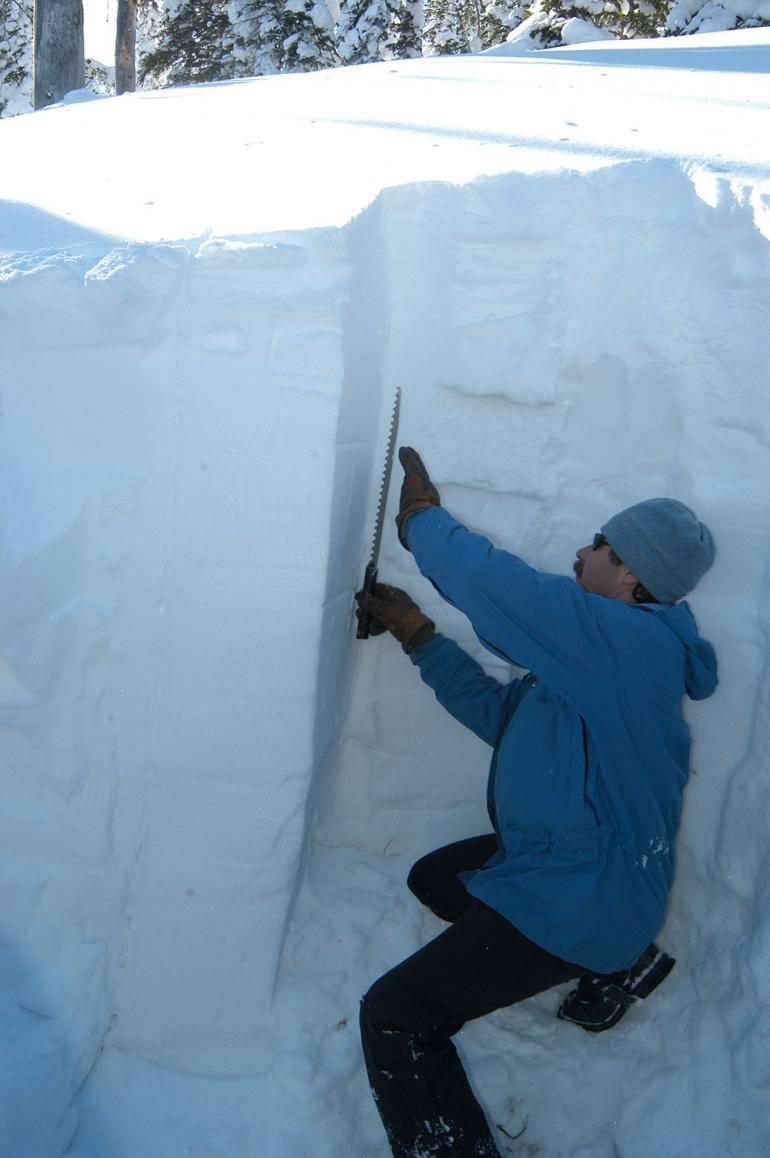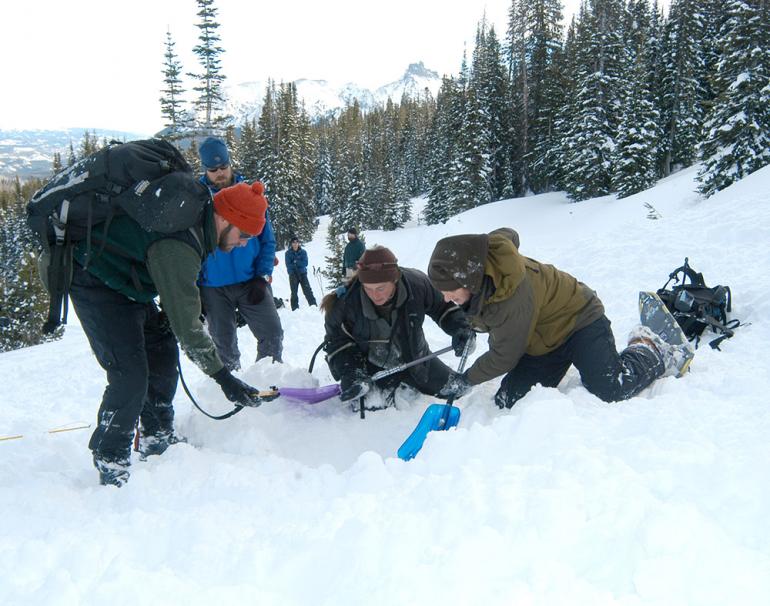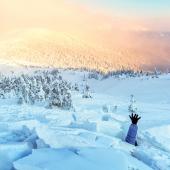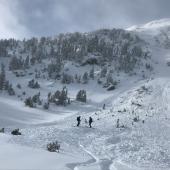Sizing up Spring Corn
For most of the winter, warm days and cold nights create hideous, shin-slicing crusts. Yet in the spring these same conditions make dreamy “corn snow.” Deep powder reigns champion on my fun meter, but corn skiing is a close second. In April and May the sun is higher in the sky, bringing warmer and longer days. On many mornings backcountry slopes turn to corn and resemble 2,000-foot groomed runs. But there’s a catch. In order to taste the fruits, your timing needs to be impeccable.
Spring cycles of warm days and cold nights turn the snow at the surface into clusters of large grains, nicknamed for their resemblance to corn kernels. For a few hours between the bulletproof early-morning crust and the slushy afternoon hours you’ll be in carving heaven.
In spring the sun is higher in the sky, increasing the angle and amount of solar radiation hitting the snowpack. This results in the snow melting with water percolating down. If the temperatures drop, everything seizes up like concrete and the frozen water channels act like rebar. These anchors reinforce the snowpack. This is when the avalanche danger is low and nothing short of a nuclear bomb will get it to move.
As the sun rises the temperatures rise and the frozen surface starts to melt. This is the window you’re shooting for. If you ski too early you’ll chatter the fillings out of your mouth, and if you sleep in you’ll find yourself sinking to the ground as the snow resembles a Slushee. The bad thing about waiting too long—besides the hateful skiing conditions—is that the avalanche danger rises rapidly, too.
Dry-snow avalanches occur because weak layers are loaded to the point of failure. Wet avalanches, on the other hand, happen because the layers themselves lose strength as their bonds melt. If it gets warm enough, the bonds melt through the entire snowpack and you crash to the ground on your skis, an unforgettable and ugly experience.
How can you tell if the avalanche danger is rising? If you notice that pinwheels are spinning downhill, getting bigger as they roll until they resemble Goliath-sized cinnamon rolls, it’s getting too late. The same if you step out of your skis and sink past your shins in wet glop. Both of these are signs that the snow is losing strength and the avalanche danger is increasing. Ideally the snow will freeze again overnight, giving you another chance of making turns tomorrow. However, three or more days of round-the-clock above-freezing temperatures spells trouble. With time the entire snowpack warms to 32 degrees from top to bottom. This means the snow crystals are poorly bonded and can barely hold themselves together. Consequently, avalanches can rip to the ground, bringing an entire winter’s worth of snow down on you.
Getting in a sweet day of corn skiing in Montana is akin to getting an elk on the first day of hunting season. The odds are against you, but it’s still possible and certainly memorable. Early, disciplined risers will reap Mother Nature’s reward. Slackers who sleep in will be punished with slushy, unsupportable, and potentially dangerous conditions. So set the alarm early, lather on the sunscreen, and get out there. Magic carpet runs await you.
Doug Chabot is the director of the Gallatin National Forest Avalanche Center in Bozeman, www.mtavalanche.com.










